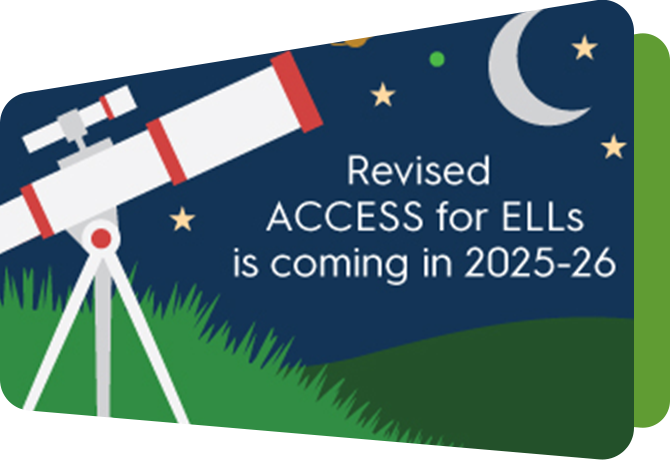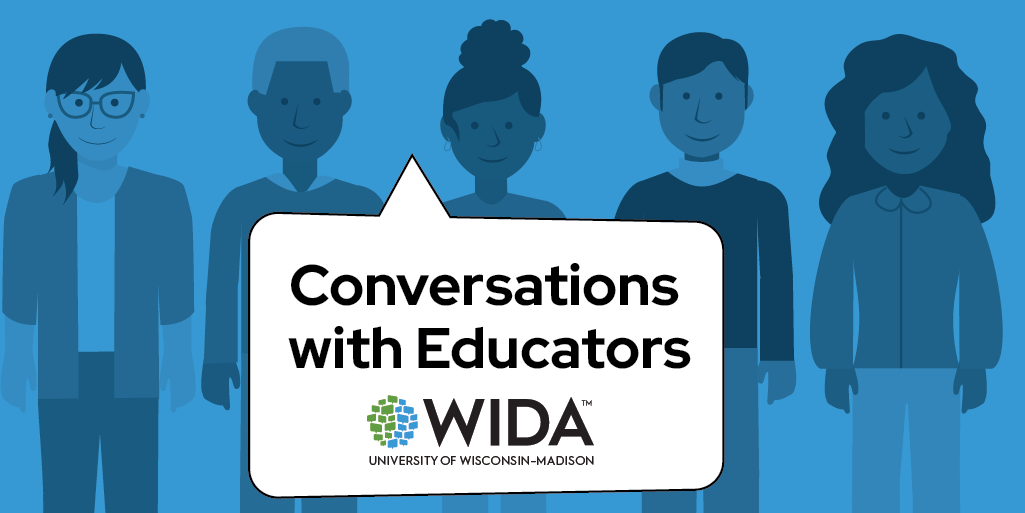Research Publications
Featured Research Publications
All Publications
Filter resources by:
Research Publications
Pracademics: The Intersection of Teaching and Research
By addressing the intersection of practice and academia, teachers are encouraged to be more involved in implementing evidence-based approaches and becoming more familiar with research informing their classroom practice directly. Engaging in pracademics highlights the work of teacher experiences and promotes the inclusion of practitioners' voices in the field.
Resource DetailsReleased February 2025
Pracademics at the Intersection of Multilingualism, Translanguaging and Transculturalism
This research brief explores the intersection of pracademics, multilingualism, translanguaging and transculturalism. It highlights how pracademics’ unique dual expertise prepares them to face pressing, real-world challenges in the diverse education settings they encounter while addressing nuances of overlapping linguistic and cultural identities. Additionally, it presents diverse voices from the field, highlighting their thoughts on the topic and the impact that pracademics has on their contexts, professional lives and experiences.
Resource DetailsReleased February 2025
Building Partnerships that Support Indigenous Languages
This publication highlights collaborative partnerships between WIDA and Indigenous communities, focusing on efforts to revitalize and sustain Indigenous languages and cultures. Indigenous experts and WIDA staff share their insights on community-driven initiatives that enhance language development, assessment, and educational opportunities for Indigenous learners.
Resource Details View Download NowReleased January 2025
Development of a New WIDA Writing Scoring Rubric for Grades 1-12
This report details the development of a new scoring rubric grounded in the WIDA English Language Development Standards Framework, 2020 Edition. This new rubric will be used for scoring responses to the writing tasks on WIDA ACCESS Online and WIDA ACCESS Paper in 2025-26, and the future revised WIDA Screener Online and WIDA Screener Paper.
Resource Details View Download NowReleased August 2024
Trauma Informed Considerations for Multilingual Learners
As teachers, staff and administrators in school buildings, district offices and educational agencies across the country, we play a critical role in responding to the individual needs of students in our teaching and learning settings. Trauma can be experienced by any student, but for those who are also learning English as an additional language or who are adjusting to a new culture, these experiences add another dimension of care to be addressed by educators. Through this focus bulletin, readers will be introduced to a research based guide for working with multilingual learners who may benefit from trauma informed practices, including discussions on special populations, the sharing of empowering and engaging strategies, a raising of awareness about prompting adverse behaviors, and building rapport across whole school, student and family networks.
Resource Details View Download NowReleased May 2024
Examining the Impact of COVID-19 on English Learners' Proficiency and EL Subgroup Disparities
This webinar examines ways in which large-scale assessment data can be used to extract important, practical and useful insights on average patterns and high-level trends in English learners’ education and academic outcomes.
Resource DetailsReleased May 2024
Examination of the Current Implementation Status of WIDA English Language Development Standards Framework, 2020 Edition
This report shares findings from the Standards Implementation Study (Sep 2022-Feb 2024). The report explores the current status of the implementation of the WIDA English Language Development Standards Framework, 2020 Edition across layers of the educational system, primarily through the perceptions of teachers, administrators, and policy makers. It identifies key educator and systems-level practices that support or hinder successful implementation; and identifies potentials and needs areas for additional resource development and continued research.
Published: May 2024
Author: Hannah Park
Released May 2024
Validating a new writing scoring scale using multi-faceted Rasch analyses
This Technical Report describes a validation study of the newly developed WIDA ACCESS writing scoring scale by examining its feasibility in differentiating student ability and practical scoring use. TR-2024-1.
Published: April 2024
Author: Ping-Lin Chuang
Additional authors: Mark Chapman, Kyoungwon Bishop, Ahyoung Alicia Kim
Released April 2024
Examining English Learner Testing, Proficiency, and Growth: Continued Trends since the COVID-19 Pandemic
This report examines English learners’ testing, proficiency, and growth during the six most recent academic years (2018-2023) to shed light on the continued impact of the COVID-19 pandemic on English learners’ educational outcomes. It provides descriptive evidence on disparities in outcomes within WIDA's English learner population, with substantial average differences in outcomes between English learners identified as Hispanic compared to non-Hispanic ELs. Findings show that these disparities are persistent and have been exacerbated by the COVID-19 pandemic.
Published April 2024
Authors: Glenn Poole, Narek Sahakyan
Released April 2024
WIDA MODEL and the CEFR
WIDA conducted a research study that linked WIDA MODEL Online scale scores to the Common European Framework of Reference (CEFR). This video discusses the research study, the findings, and the Understanding WIDA MODEL Online Scale Scores in Terms of CEFR Levels tool.
Resource DetailsReleased January 2024
Detection of Multiple Group Differential Item Functioning for Students With Disabilities of the Alternate ACCESS Field Tests in 2023
This report describe how WIDA applied Differential Item Functioning analysis among multiple disability groups of our Alternate ACCESS Field Test items in 2023.
Resource Details View Download NowReleased December 2023
Linking Scores from WIDA MODEL Online to the Common European Framework of Reference (CEFR)
This report describes a research study conducted by WIDA to link scores on the WIDA MODEL Online tests of Listening, Reading, Speaking, and Writing to the Common European Framework of Reference (CEFR). The results of the study are cut scores for each of the four language domain tests that are recommended for classifying test takers according to the levels of the CEFR.
Resource Details View Download NowReleased December 2023
Understanding WIDA MODEL Online Scale Scores in Terms of CEFR Levels
WIDA research findings show that WIDA MODEL Online scale scores can be interpreted in terms of Common European Framework of Reference for Languages (CEFR) levels. Use the tables in this document to look up students' MODEL scale scores and see the corresponding CEFR levels for each domain.
Resource Details View Download NowReleased December 2023
Identifying Multilingual Learners With Specific Learning Disabilities: Data, Advice and Resources for School Teams
This Focus Bulletin offers expert advice, data on 2020-21 identification rates, data templates, common scenarios and resources for school teams identifying K-12 multilingual learners for Specific Learning Disabilities.
Originally published May 2017/Updated November 2023
Author: Lynn Shafer Willner
Released December 2023
English Learner Identification of Kindergarten Learners
This study examines decision makers, criteria and procedures of kindergarten English learner identification within a U.S. state, in view of WIDA Screener for Kindergarten.
Resource Details View Download NowReleased December 2023
ELD Essentials
This flyer shows how WIDA English language development resources fit together. This resource is intended to serve as an entry point for teachers, administrators, state staff, etc. who are new to WIDA’s ELD system of support.
Resource Details View Download NowReleased November 2023
La colaboración: Trabajando juntos al servicio de los estudiantes multilingües
Este boletín de enfoque de WIDA enfatiza los múltiples beneficios de la colaboración. El modo colaborativo se presenta como un proceso cíclico que requiere la responsabilidad mutua por parte de los docentes que enseñan y evalúan a estudiantes multilingües — mientras también planifican para y reflexionan sobre el éxito académico de ellos.
Detalles del recurso Ver Descargar ahoraReleased November 2023
Using Embedded Universal Tools to Support Students' Test-taking Experience
This WIDA Focus Bulletin explores educators’ and students’ perceptions of the accessibility tools available to all students when taking an online WIDA assessment. The bulletin emphasizes the ways in which the universal tools can support the test-taking experience for multilingual learners.
Published October 2023
Authors: Jason A. Kemp, Ahyoung Alicia Kim
Released October 2023
Words for Science Learning: Which Words and When?
When educators think of language instruction in science, the traditional practice of pre-teaching vocabulary comes to mind. This Focus Bulletin builds on new research and offers resources for embedding vocabulary instruction into students’ participation in the science and engineering practices.
Resource Details View Download NowReleased August 2023
District Level Analysis of ELL Growth
This research project explored the patterns of district-level ELL “growth” for the 2007-2011 time period and identified the existence of “high-flying” and “low-cruising” districts within ACCESS for ELLs in terms of ELL growth.
Published May 2013
Author: Narek Sahakyan
Resource Details View Download Now
Released May 2023




